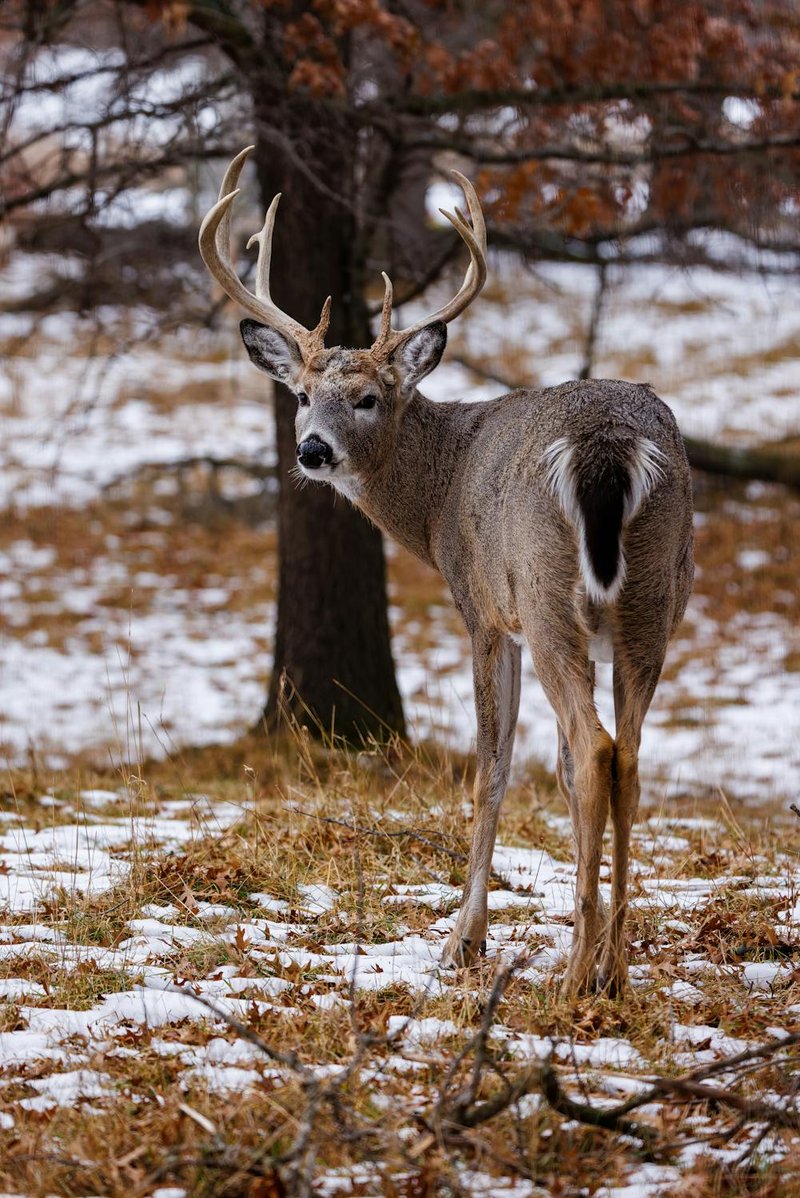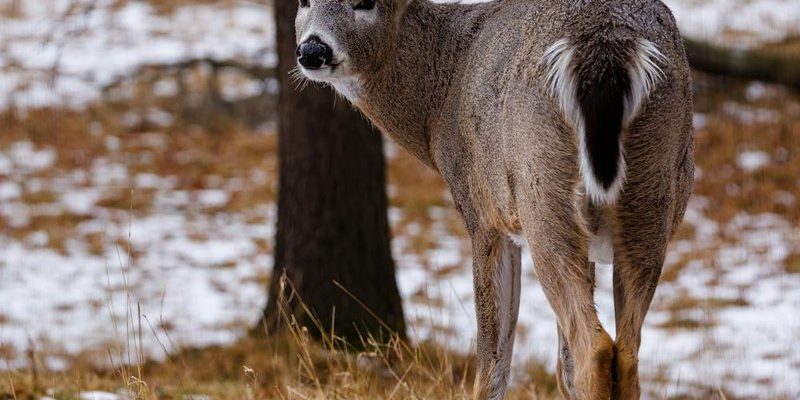
Honestly, it’s not always as straightforward as it seems. Just like meeting a new person, how you react can shape the encounter. You might wonder if you should stay still, take a photo, or back away cautiously. Let me explain the best steps to take when you cross paths with a white-tailed deer—it’s important for both you and the deer.
Understanding White-Tailed Deer Behavior
Before diving into what actions to take, it’s helpful to know a bit about white-tailed deer behavior. These deer are often shy and prefer to avoid humans. When a deer senses danger, it may freeze in place, raise its tail, and bound away. This behavior is instinctual; it’s how they’ve survived in the wild for hundreds of years.
When encountering a deer, you might notice that it’s alert but not immediately skittish. They generally rely on their keen sense of hearing and smell, so if you’re quiet, it might just go about its business. However, they can also become frightened suddenly, especially if they sense a threat. Understanding this can help you decide how to act during your encounter.
What to Look for During an Encounter
Take a moment to observe the deer. Are there more nearby? Is it standing still, or is it grazing? Look for signs of distress, such as twitching ears, raised tails, or heavy breathing. These signals often indicate the deer feels threatened. If it seems calm, you can relax a little. Enjoy watching, but keep your distance.
If you notice any fawns nearby, be extra cautious. Mother deer are very protective, and if you get too close, she might see you as a threat. Always give the deer plenty of space to avoid triggering a defensive reaction.
Stay Calm and Quiet
So, what do you do when you actually spot a white-tailed deer? The first step is to **stay calm**. Your instinct might be to shout or move quickly, but that can startle the deer and push it away. Instead, take a deep breath, and keep your movements slow and deliberate. Here’s a simple checklist:
- Remain still and quiet.
- Avoid direct eye contact.
- Keep your hands at your side.
By doing this, you’re likely to keep the deer feeling safe. It may even come closer, especially if it thinks you’re not a threat. Remember, never try to approach a deer, even if it looks friendly.
Capture the Moment Respectfully
If you’re keen on snapping a picture, do it from a distance! Use a zoom lens or your smartphone to capture that beautiful moment without invading the deer’s space. Be respectful of its habitat—don’t use flash, as that can spook the deer.
This is not just about capturing a moment for your social media; it’s also about appreciating wildlife responsibly. Sharing your experience with others can help raise awareness about respecting nature and wildlife habitats.
Backing Away Safely
If the deer shows signs of distress or starts to move away, it’s time to back off. But how do you do this without alarming the deer? Here’s a simple approach:
- Turn your body sideways—it’s less threatening.
- Move slowly and quietly, avoiding sudden movements.
- Don’t run; just walk back calmly to where you came from.
By doing this, you’re signaling to the deer that you’re not a threat. It gives the deer the chance to feel safe and move on without feeling cornered or scared.
Managing Close Encounters
In rare cases, a deer may approach you or even seem too interested. If this happens, it’s important to maintain your composure. Here’s what you can do:
- Stand tall and still.
- Avoid feeding or trying to touch it.
- Use your voice in a calm manner to gently shoo it away, if necessary.
Remember, wild animals should remain just that—wild. It’s crucial for both your safety and theirs that deer learn to stay wary of human interaction.
Understanding Deer Seasons and Safety
White-tailed deer are most active during dawn and dusk, so if you’re hiking or exploring during these times, stay extra vigilant. If you encounter a deer, take those precautions seriously. Be mindful of your surroundings as you step into their territory, understanding that these creatures have territories of their own.
If you’re in an area known for deer crossings, like near forests or fields, always be cautious while driving. Deer can dart into roads unexpectedly, which can lead to dangerous situations.
Always Report Injured Deer
If you find a deer that appears injured or sick, it’s best to report it to local wildlife authorities rather than trying to intervene yourself. They are trained to handle such situations and can assist the deer safely and humanely.
Encountering a white-tailed deer in the wild can be a magical experience, but it’s important to approach it the right way. By staying calm, keeping your distance, and respecting their space, you can enjoy the encounter without causing any stress to the deer. Remember, these moments are a gift from nature, reminding us of the beauty that exists beyond our daily routines. So next time you’re out in nature, appreciate the wildlife around you and cherish those brief connections!

